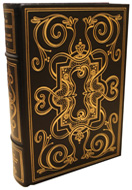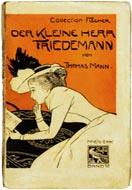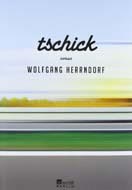[PORTFOLIO OF COMPUTER ART PIONEERS ? INCUNABLE OF AI ART]. Art Ex Machina: Six Original Computer Art Serigraphs
Moles, Abraham A. (preface), and Manuel Barbadillo, Hiroshi Kawano, Kenneth C. Knowlton, Manfred Mohr, Frieder Nake, and Georg Nees (artists)
Verkäufer
Penka Rare Books and Archives, ILAB, Berlin, Deutschland
Verkäuferbewertung 5 von 5 Sternen
![]()
AbeBooks-Verkäufer seit 15. Dezember 2023
Beschreibung
Beschreibung:
Rare and early portfolio of computer-generated graphics which, as emphasized on the title page, were then screen-printed in only 200 copies ?by hand? of the printer Pierre Foisy. The portfolio brings together experimental pieces by some of the best-known pioneers of computer-generated art who worked in the context of the theorists Max Bense and Abraham Moles, who developed theories of ?artificial creativity? and ?artificial intelligence? back in the 1950s and 1960s and led corresponding interdisciplinary research. About a year before the portfolio offered here was printed, Moles published his book ?Art et ordinateur? (Art and Computer). Prior to this, some of his essays on the subject had already attracted international attention. Like Bense, Moles no longer saw the artist as the author of an individual work, but rather as the author of a programmable rule or principle according to which the computer generates corresponding patterns through random combinatorics. Nevertheless, this place of the subject was also to be replaced by the computer by appropriating an empirically ascertainable, statistically verifiable psychology of perception. In ?Art et ordinateur?, Moles imagined a future in which ?emotion engineers? would be able to program aesthetic pleasure. The art academies of this future he envisioned as computer centers that would be supplied with the results of experimental psychology laboratories in which the effect of the work would be measured on test subjects. Therefore, it is not surprising that the pioneers of these art experiments did not usually come from art academies, but from mathematics, physics, technology and psychology institutes, for example. Almost an exception was the philosopher Hiroshi Kawano, who specialized in aesthetics and began investigating the possibilities of computer technology in art in Japan. His interest was initially less technical and more art-theoretical, inspired by the writings of Max Bense. When the computer center was opened at the University of Tokyo in 1962, he began to teach himself programming there. A few months earlier, he had already published an essay in which he introduced Bense's theory into the Japanese debate. The results of his first graphical programming work were published shortly afterwards in the ?Japan IBM Review? Numerous other graphical works followed, the technical foundation of which were so-called Markov chains, i.e. mathematical models in stochastics. At the end of the 1960s, he turned away from the Marko chains and started working on other methods of image generation using computers, which he himself described as research into ?artificial intelligence? In 1971, he presented his interest in AI at the International Colloquium for Computer Art in Zagreb, where he gave a lecture entitled ?Computer Art as Artificial Intelligence? ( Simone Gristwood, Hiroshi Kawano (1925?2012): Japan?s Pioneer of Computer Arts, in: Leonardo, Volume 52, Number 1, 2019, pp. 75-80) Another exception is the painter as well as gold and silversmith Manfred Mohr, who also came to computer art through the publications of Max Bense. At the Meteorological Institute in Paris, he was given access to a flatbed plotter and the CDC 7600 supercomputer, enabling him to create his first algorithmic computer graphics in 1969. (Daniel Becker, in: AKL XC, 2016, p. 184) Frieder Nake and Georg Nees, on the other hand, were both mathematicians and students of Max Bense in Stuttgart. Together with Michael Noll (who is not represented in the portfolio), the three pioneers were called Group 3N. They were among the first to use computers and graphomats to create graphics. Frieder Nake had completed his doctorate on probability theory and was a research assistant at the computer center of the Technical University in Stuttgart for many years. For him, graphics was above all a method of mathematical research. He ended his active work as a computer artist as early as 1972. (D. Becker, AKL XCI, 2016, p. 481) Nees co. Bestandsnummer des Verkäufers 53128
Bibliografische Details
Titel: [PORTFOLIO OF COMPUTER ART PIONEERS ? ...
ZVAB ist ein Internet-Marktplatz für neue, gebrauchte, antiquarische und vergriffene Bücher. Bei uns finden Sie Tausende professioneller Buchhändler weltweit und Millionen Bücher. Einkaufen beim ZVAB ist einfach und zu 100% sicher — Suchen Sie nach Ihrem Buch, erwerben Sie es über unsere sichere Kaufabwicklung und erhalten Sie Ihr Buch direkt vom Händler.
Millionen neuer und gebrauchter Bücher bei tausenden Anbietern
Antiquarische Bücher
Von seltenen Erstausgaben bis hin zu begehrten signierten Ausgaben – beim ZVAB finden Sie eine große Anzahl seltener, wertvoller Bücher und Sammlerstücke.
Erstausgaben
Erstausgaben sind besondere Bücher, die den ersten Abdruck des Textes in seiner ursprünglichen Form darstellen. Hier finden sie Erstausgaben von damals bis heute.
Gebrauchte Bücher
Ob Bestseller oder Klassiker, das ZVAB bietet Ihnen eine breite Auswahl an gebrauchten Büchern: Stöbern Sie in unseren Rubriken und entdecken Sie ein Buch-Schnäppchen.






